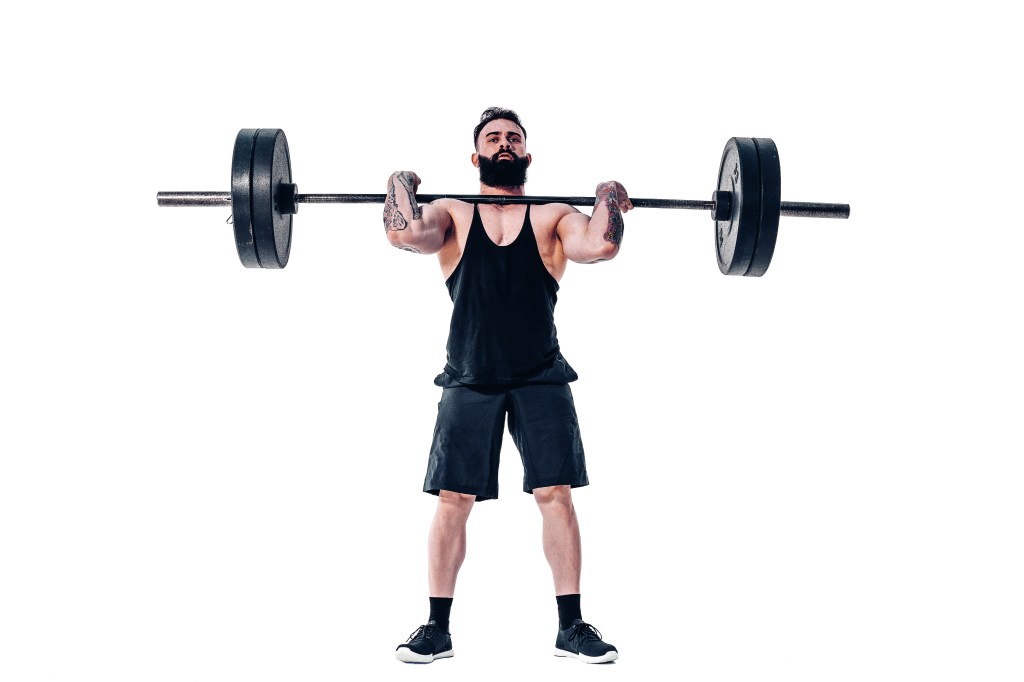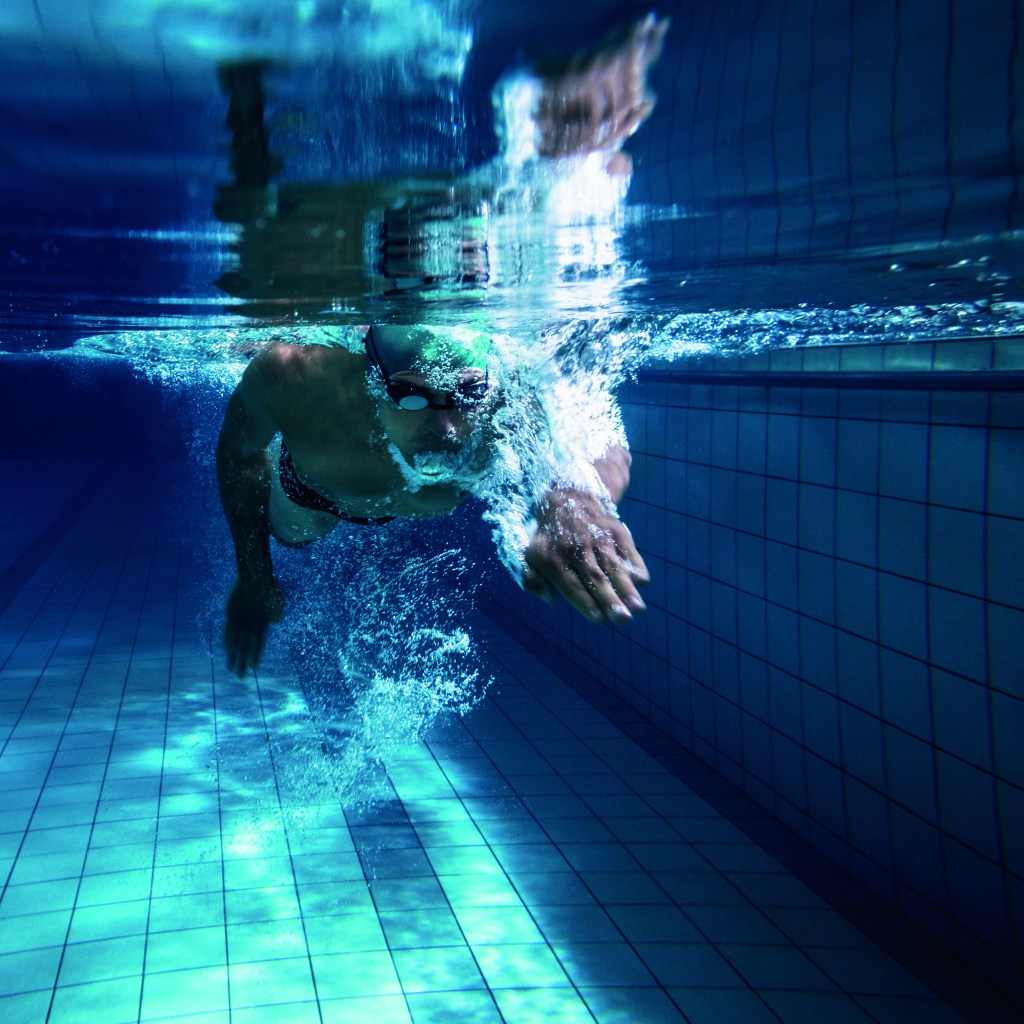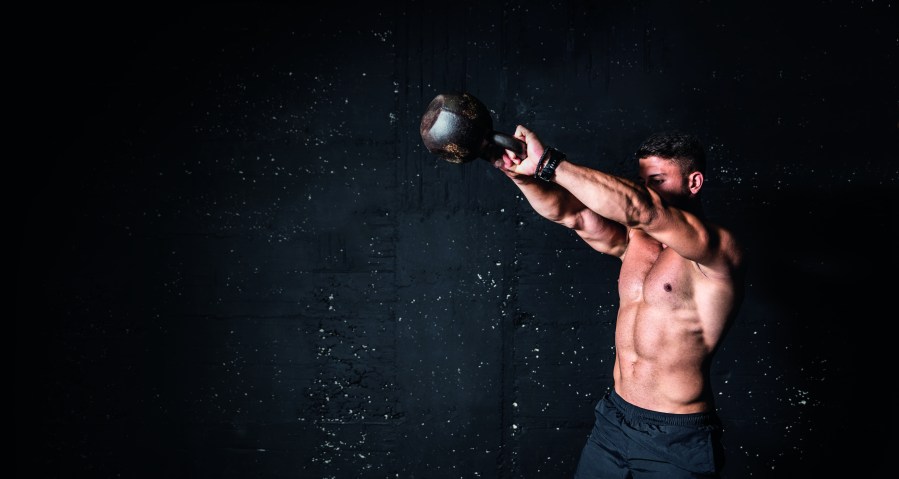Ignite fat loss and maintain your newly sculpted physique with these expert strategies for lasting effects
You’re likely reading this article for one of two reasons. Either you’ve tried to burn belly fat in the past but ultimately not made the desired changes to your body shape, or you want to make your first attempt at stripping away fat to sculpt a leaner and more defined physique. Either way, you’ve come to the right place.
First, though, a disclaimer: there are no exercises that are best to lose belly fat. To lose belly fat, you need to be in a calorie deficit, and the quickest way to achieve that is to take a look at what you’re eating and learn how to track calories.
Burning fat effectively isn’t easy – if it was, everyone would be walking around with washboard abs. And while this article will help you learn how to lose belly fat, it should be noted that there is no way to aim fat loss at just one area of the body (what’s known as ‘spot reduction’). Instead, overall fat loss is the name of the game: achieve that, and your stomach will follow suit.
But once you know the best ways to eat and train – as well as how to sleep better, stress less and enjoy life more – you will start shedding your unwanted fat faster than you ever thought possible.
Of course, the usual mantra of eat right, move more and subsequently end up in a calorie deficit (the key driver for fat loss) is the number-one solution when you want to learn how to lose belly fat, but there are ways of reaching that point in an accelerated timeframe.
Key fat-loss factors – think good sleep patterns, elevated daily movement habits and more varied training stimuli – are easily neglected. But experts in strength, conditioning and nutrition know that taking a broader approach can speed up your fat loss plan in the weeks ahead. It can also create a more sustainable, long-term fat-burning solution.
Read on, put our advice into action, and you’ll be amazed at how quickly you look, feel and perform better than ever.
- Be more NEAT
When it comes to learning how to lose belly fat, your fat-burning training regime is important, but so are your daily movement habits.
“NEAT – non-exercise activity thermogenesis – means the calories burned outside of exercise, eating and sleeping,” explains Matt Jones, a performance coach for human performance experts P3RFORM. “It includes all your movements, however big or small, throughout the day. From climbing the stairs, to standing at your desk – even fidgeting.
“Fat loss is not just about how many calories you burn in a day, but how many you burn over an extended period. So, improving your NEAT can play a huge factor in assisting you to lose fat.”
Try to picture your whole day as an opportunity for movement and activity, not just the windows when you can fit in organised exercise sessions.
2. Build more muscle
When you’re looking to shift fat, it’s tempting to tip the cardio-strength scales in favour of the former. But that’s a mistake.
“It might sound counterintuitive to someone looking to decrease body fat, but increasing muscle mass is the best solution,” says Jones. “For every 0.5kg of muscle gained, you will burn 6-10 extra calories per day. So if you gain 4.5kg of muscle mass alone, that can equate to burning around an extra 100 calories. This is without even taking into consideration the additional calories burned from the lifting exercises themselves.”
Lifting weights will also help to keep you looking toned and strong when you start cutting down on the calories.
“Strength training in itself helps to preserve muscle mass while in a calorie deficit,” adds Jones, “as long as adequate protein is also being consumed.”

3. Apply intervals
While high-intensity interval training (HIIT) can be useful if you’re short on time, interval training in its less intense form can be useful for fat loss, too.
“The primary difference between HIIT workouts and interval training is the recovery periods,” says Jones. “HIIT has shorter recovery periods to keep the intensity high, while interval training is performed with longer recoveries.”
That means you can train more consistently: interval training will place less stress on your body than HIIT to keep you coming back more often. It also empowers you to combine interval training with your favourite cardio.
“That’s especially helpful for individuals who want to change up how they do their favourite running, cycling or rowing sessions,” says Jones.
So, if you’re after the best exercises to lose belly fat, try restructuring your cardio sessions into interval-based fat loss workouts.
“Break the session up into smaller chunks of very high-intensity activity, and very low-intensity activity which you will use for recovery between the harder efforts,” says Jones. “For a running workout, that could be 6 sets of 30-second efforts at a fast speed, and 2 minutes of easy recovery jogging or walking in-between. For a rowing workout, that may be rowing 200m as fast as possible, then doing 800m at an easy pace for recovery, repeated 3-5 times.”
4. Improve your sleep
Lying in bed might not sound like the best way to burn fat, but a healthy amount of sleep is vital for your fat-burning ambitions.
“When we don’t have enough sleep we all know that just about everything in our lives suffers, from our concentration to our mood,” explains Jones. If you’re tired, you will make poor food choices and find it harder to train. Sleep deprivation is also linked to an increase in a hormone called ghrelin. This increases hunger levels in the body.
“A two-week study found that during a period of calorie restriction one group that slept normal hours (8.5 hours per night) experienced 55% of their reduction in body weight specifically as fat loss. That was compared to another group with restricted sleep (5.5 hours per night) that experienced only 25% of their reduction as fat loss.
“This suggests sleep loss increases the loss of muscle mass during dieting. So, use your phone or wearable device to track your current sleep patterns and try to improve the quality and volume of your sleep.”
5. Variety is key
To achieve your fat-loss goals you need a healthy combination of organised routines and fresh challenges.
“Losing body fat is about consistency across a period of months. That entails both consistency of managing your nutrition, and consistency of regular exercise,” says Jones. “But one area where people often fail is when they get into a routine and then get bored with their programme. It’s better to get some variety and fun into your cardio training.”
If you want to learn how to lose belly fat, a wider variety of stimuli, in the form of different exercises, will boost your motivation and challenge your body in new ways. It will also enhance your longer-term weight-control strategy.
“For weight training, that could simply be switching in some different exercises that work the same muscle groups. Or you could change how many sets and reps you perform. For cardio exercise, it could be changing up your modality from running to cycling or swimming.”

6. Watch the deficit
It’s not new, or particularly fun, but the simple fact is that if you want to reduce your body fat you need to ensure you’re in a calorie deficit. Put simply, that means you burn more calories than you consume. However, there are some smart ways to achieve it.
Arj Thiruchelvam is head coach at Performance Physique. He says that calorie consumption should be viewed from a wider lens than daily targets. “The process of fat loss doesn’t follow a day-to-day nature,” he says, “but instead works on higher and lower calorie days. This allows you to maximise moments of less hunger, the desire to eat more and socialise, while concurrently allowing you to achieve your body composition goals.”
7. Slow down
As well as what you eat, focus on how you’re eating it. “When you eat too quickly, you don’t notice how full you are and your receptors can’t keep up,” says integrative health coach and nutritionist Arina Kuzmina. “Try slowing down, take a break from running around for ten minutes, sit down and actually enjoy your well-deserved meal.”
That also means eating away from the TV, emails or social media.
8. Lift smarter
Instead of focusing on isolation exercises to lose belly fat – for example, cable work, crunches and biceps curls – make heavy compound lifts the basis of your strength training. Squats, deadlift variations, pull-ups – all these lifts recruit more than one joint and muscle group at a time.
“When these functional exercises are performed correctly with challenging loads,” says personal trainer Sana Shirvani, “you will burn more calories, as you’re performing a larger volume of work in the same amount of time.”
9. Turn up the volume
When it comes to your strength training, to dial up the fat-burning effectiveness you need to make your body work harder. “This can be achieved either through the load you lift or by favouring higher rep ranges and density-based sessions,” says The Movement Blueprint’s Harvey Lawton.
“Two effective protocols in this regard are escalating density training (EDT) and German volume training (GVT). These are great ways to keep stimulus high. Alongside the correct nutritional intake, it will also help to support excess fat loss.
“Escalating density training involves completing as many reps as possible within a given time frame (usually 15 to 20 minutes), with strength and hypertrophy being the main aims. The most popular method is to combine two antagonistic exercises – pull-ups and lunges, say – and complete 6-8 reps of each in a superset format.
Rest for 45-60 seconds after each superset and see how many reps you can manage within the time period. Progress is easily measured, because the next time you train you simply shoot for more total reps.
“GVT is another high-volume protocol, which essentially involves 10 sets of 10 reps, with 60-second rests. Like EDT, you can combine antagonistic exercises in a superset format, or pick a big, compound lift – the squat, for instance – and shoot for 10 standalone sets of 10. To start, pick a weight you can manage 20 reps with, and stick with it for the full 10 sets.”

10. Rest less
You want a cardio stimulus? Here is a fail-safe way to get one. Decreasing your rest periods requires your body to utilise, optimise and prioritise fuel, oxygen delivery and effort to the working muscles.
If fat loss is the goal, whip up a sweat and stay sharp between your working sets.
11. Recover right
“Recovery is one of the most untapped performance parameters,” says Lawton. “When we talk about recovery, we don’t mean the latest percussive massage gun. Instead, we are referring to all the things that underpin your body’s readiness to perform – namely sleep, nutrition and hydration.
“The better the quality of each of these components, the more your body will adapt, develop and regenerate. That will leave you ready to hit each training session hard, without going deeper into that physical stress pot.”
12. Fill up on protein
Protein is the most filling macronutrient and could stop you reaching for junk food that will only add to your belly fat.
“Protein encourages the body to tap into your fat stores, rather than muscle tissue,” says Nick Mitchell, CEO and founder of Ultimate Performance. “When you’re in a calorie deficit, your body will start to convert those fat stores to give you energy. But, particularly if body composition is your goal, then a combination of high-protein foods and resistance training will signal the body to tap into your fat stores, rather than your muscles.”
Get your fill of lean proteins, such as chicken, fish, tofu and legumes. Mitchell recommends anywhere between 1.6g and 2g of protein per kilogram of lean body mass. However, estimating the magic protein requirement for you will be very subjective.
13. Drink more
Water plays a vital role in processing calories, whereas mild dehydration can slow your metabolism. In one study, published in JAMA Pediatrics, adults who drank eight or more glasses of water a day burned more calories than those who drank four. To stay hydrated, drink a glass of water before every meal. Also snack on melons and citrus fruits, which naturally contain lots of water.
In a 2015 UK study, those who drank 500ml of tap water half an hour before each meal lost 1.3kg more over a 12-week period than the control group, who didn’t drink the water before eating. The authors commented that those trying to learn how to lose belly fat, or body fat in general, could try drinking a pint of water before every meal, three times a day.
14. Think fast
Some people swear by intermittent fasting; others think it’s a load of nonsense. As with every major health debate, the answer lies somewhere in between, and is highly subjective. It’s important to note that fasting is mainly another means of getting into that state of calorie deficit (if you’re not eating for half the day, chances are you’re not going to be over-consuming calories). Although Dr Michael Mosley, creator of The Fast 800 diet, sees other advantages:
“Short-term fasting can lead to several changes in the body that make it easier to burn belly fat,” he says. “This includes reduced insulin, increased growth hormone and a small boost in metabolism. According to a 2014 review, intermittent fasting can cause weight loss of 3-8% over three to 24 weeks.
“Time-restricted eating is very straightforward. Simply ensure that for at least 12 hours within each 24-hour period, you do not consume any calories. Some people prefer to shorten their eating window further, to ten or even just eight hours, although recent research shows that a 12-hour period away from food is enough time to give your body significant benefits.”
15. Manage stress
There’s research to suggest that high levels of stress and a lack of sleep can increase inflammation in your body, which in turn can lead to increased fat storage around the stomach area. If you want to learn how to lose belly fat, start by prioritising relaxation. Of course, finding ways to reduce stress is often easier said than done, but yoga, meditation or even regular fresh-air walks are some tried-and-tested methods.

16. Eat alone
Research in The American Journal of Clinical Nutrition found people eat up to 44% more food when eating with others. It noted one cause is that we still lean towards ‘social facilitation’, an ancestral mechanism that ensured equitable food distribution. Eating alone also allows you to savour your food, and listen to your body when it tells you it’s getting full.
17. Switch off
The greater the time spent on screens, the greater the chance of weight gain. That’s according to research from the World Cancer Research Fund International, and is largely because the majority of our time on screens is spent sitting down.
“Being inactive can also actually trigger your appetite at the worst time: when you’re burning the least amount of calories,” says Dr Deborah Lee, of Dr Fox Online Pharmacy.
18. Do more burpees
It’s true that nutrition holds the key if you want to lose belly or body fat, but you can improve your chances by doing the right types of exercises, too. The burpee is an undeniably brutal bodyweight movement. But Reiss Mogilner, trainer with global functional fitness community F45 Training, says it’s an invaluable fat-burning tool.
“This move majorly works your core, as well as your shoulders, chest, lats, triceps and quads,” he says. “It gets your heart rate going and your blood pumping, and acts as the perfect warm-up or finisher exercise.”
TRY THIS:
- Set your stopwatch
- In the first minute, do 1 full burpee (chest to the floor), then rest for the remainder of the minute. Easy!
- Do 2 burpees in the second. See where this is going?
- That’s right: 3 in the third
- Keep aligning the number of burpees with the number of minutes, and resting for the remainder of each minute
- Simply stop when you can’t complete the set number of burpees within the minute
- If you can make it to 20, consider yourself a certified burpee machine
19. Focus on fibre
Studies have found that eating more soluble fibre – whole grains, fruits and vegetables – can help you lose belly fat and stop it from creeping back on. A study in the journal Obesity found that a tiny 10g increase in soluble fibre was linked to a 3.7% lower chance of gaining belly weight. Just one cup of oats contains 8g of the good stuff, while a banana contains around 3g.
20. Look after your gut
A happier gut is a leaner gut. And what makes a happy gut? Variety. Previous research discovered how those with a more varied gut microbiome (the bacteria that live in our intestines) had a lower risk of belly fat. Plus, 2022 research conducted by the University of California found that eating too much food, too often, resulted in poorer microbial and metabolic health, potentially proving that a three-meal-a-day eating style is ideal.






